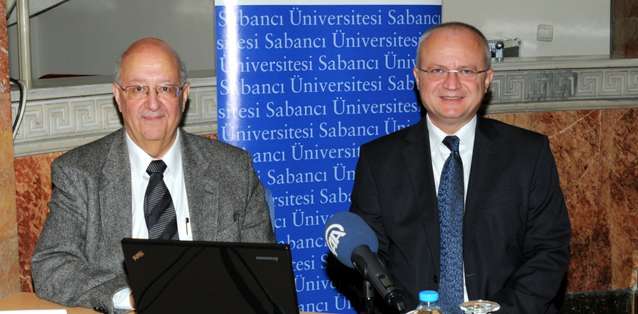14/11/2013
Sabancı University Faculty of Arts and Social Sciences Professor Ersin Kalaycıoğlu and Koç University Professor disclosed the “Family, Work and Gender in Turkey” report prepared as part of the International Social Survey Program (ISSP).

The 2012 field survey of the International Social Survey Program (ISSP) was conducted between February and April 2013 with 1555 respondents from 59 provinces.
The survey assessed family structure, how many children families wanted, opinions about women’s participation in the workforce, and whether the family was gaining strength as an institution. Findings and discussions were presented by Professor Ali Çarkoğlu and Professor Ersin Kalaycıoğlu.
According to the information presented at the conference: As Turkey underwent rapid urbanization and industrialization after World War II, the three generations that started families during this period increasingly settled in urban areas and worked in the industrial and service sectors. In this environment, a nuclear family composed of mother, father and at least one child became the norm. This is confirmed by the findings in the report. The majority accept the necessity for both men and women to work outside the home for income. Nevertheless, a great majority of men and women still believe that the primary role of the woman is to raise children and do housework, and that the man must earn income outside the home and support the family. It is clear that the idea of a woman working outside the home is not desirable unless necessary.
The outcome of this is the expectation that working women must perform effectively both in the workplace and at home. This causes only one-fourth of women to enter the job market, while the majority only seek outside work when their children start school and they have free time at home. This leads to wanting fewer children, with most of the respondents wanting two. Secondly, the burden this brings onto the woman requires several times more time and energy than men. Compared to the countries that took part in ISSP 2002 globally, this burden is considerable.
The situation becomes worse for the woman when there are elderly relatives who need care in the household. Regardless of whether the relative is hers or her husband’s, the woman assumes the heavy burden first and foremost. It is understood that men do not contribute to regular household work apart from small repairs around the house, leaving most of the task to women.
These findings may suggest an unfair task division in the family. The majority of both men and women agree that women have an unfairly large share of the task. However, it is also fact that not much is being done in the way of changing the situation. All things considered, the high rate of satisfaction and the presence of a satisfied majority indicates that there is not much expectation for change.
Government support is the most expected means of lightening the burden, and few consider private or nonprofit civil society organizations to be able to help.
The final remarks were that the data collected would be made publicly available within a year. Sociological and socio-psychological statistical analysis of the data will make the findings of the report more significant, and comparative studies will provide more insight into the data presented in the report.





